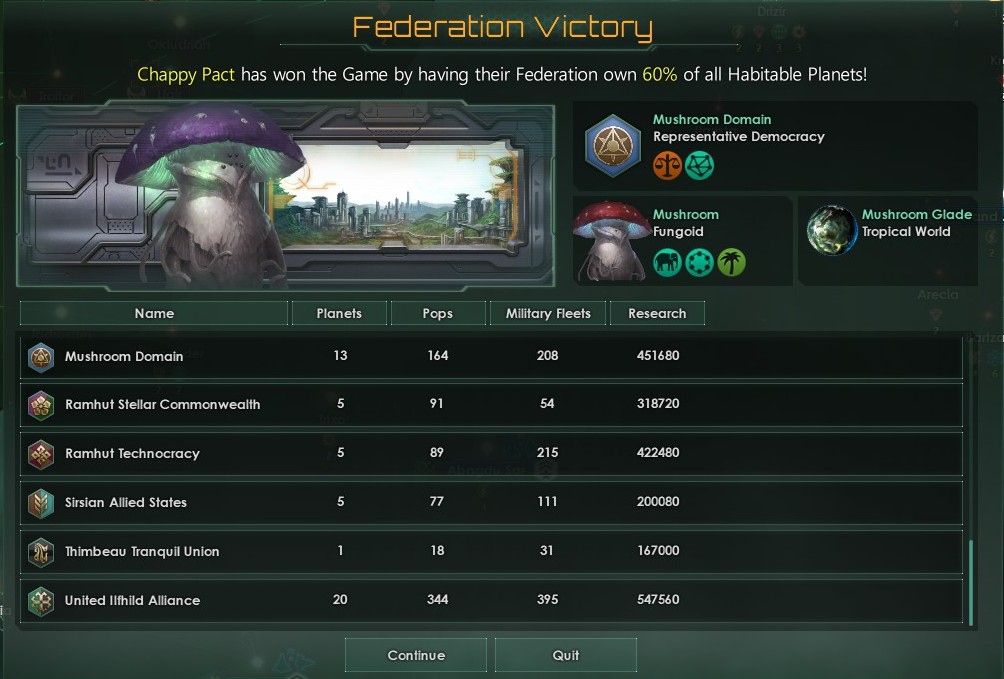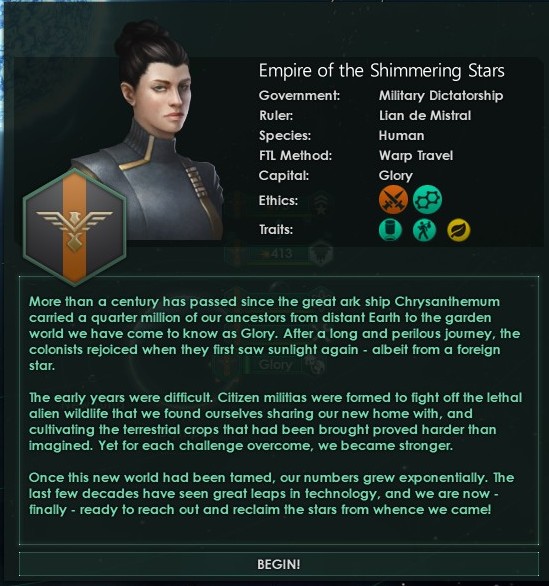 Humanity triumphant! My first game of Stellaris was a short one, as my fledgling humans were ground to dust by a nearby computer player. My second was more successful. Under the banner of the Empire of the Shimmering Stars, humanity spread out from the Deneb system – befriending the pre-spaceflight Immathurans, bringing more species and more worlds under its sway.
Humanity triumphant! My first game of Stellaris was a short one, as my fledgling humans were ground to dust by a nearby computer player. My second was more successful. Under the banner of the Empire of the Shimmering Stars, humanity spread out from the Deneb system – befriending the pre-spaceflight Immathurans, bringing more species and more worlds under its sway.
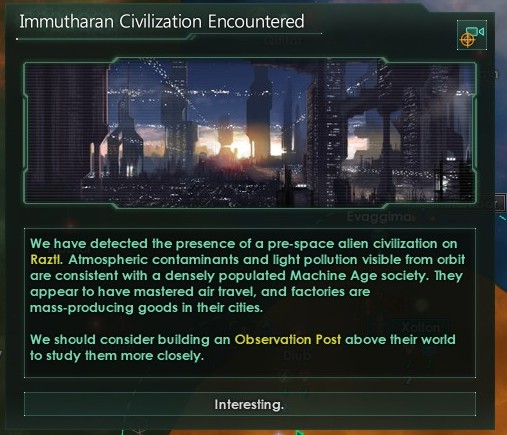 Some of humanity’s neighbours turned out to be friendly, or at least benevolent neutrals. I signed migration treaties, allowing us to populate one another’s worlds. Some were hostile. When my first spacefleet was destroyed in a bid to protect my Immathuran proteges, I built a second one, the Remembrance Fleet. The Remembrance Fleet went on to turn the tables, and the would-be aggressors became first vassals and then subjects.
Some of humanity’s neighbours turned out to be friendly, or at least benevolent neutrals. I signed migration treaties, allowing us to populate one another’s worlds. Some were hostile. When my first spacefleet was destroyed in a bid to protect my Immathuran proteges, I built a second one, the Remembrance Fleet. The Remembrance Fleet went on to turn the tables, and the would-be aggressors became first vassals and then subjects.
On and on the human tide rolled, until finally I stretched too far. The Ubaric Progenitors, an ancient “Fallen Empire” (ornery precursor races populating the Stellaris galaxy), objected to my colonies near their borders. The Remembrance Fleet fought them off – just. I attempted to take the war to the Ubari capital, an ancient ringworld. It was a disaster: the combined Ubari forces crushed mine. In the ensuing peace treaty, the Ubari forced me to abandon a swathe of colonies, and to add insult to injury, assassinated my leader.
Fortunately, the Shimmering Stars had the size and strategic depth to recover. Rebuilt newer and stronger, my Grand Fleet fought off an extra-galactic invasion (one of Stellaris’ “late-game crises”)… and returned to unfinished business. Once again, a human fleet, supported by allied and vassal contingents, appeared above the Ubari ringworld.
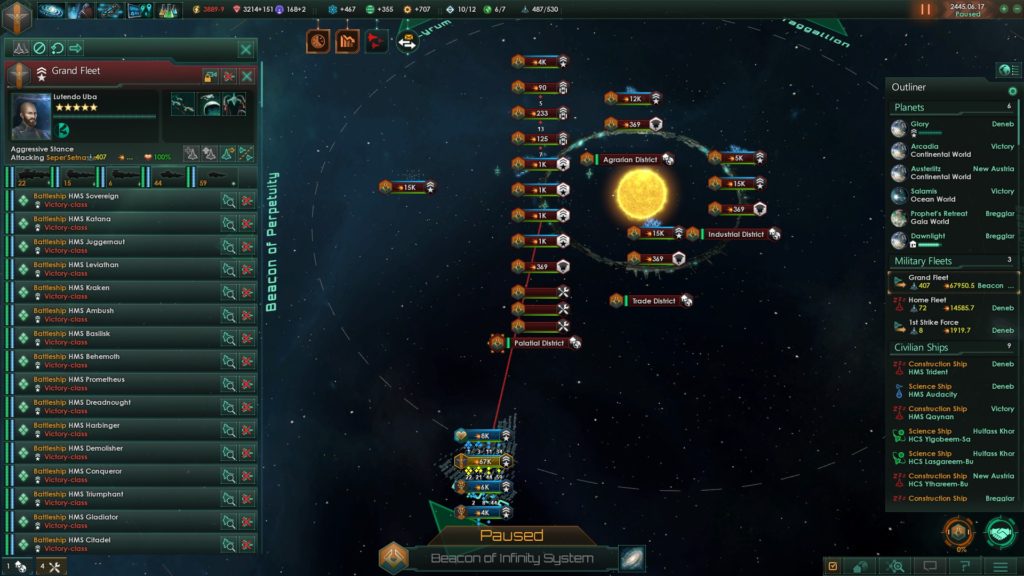 This time, the allies outgunned the Ubari several times to one. One by one, the Ubari warships and starbases winked out. The Ubari leaders surrendered. The bronze eagle flag of the Shimmering Stars flew over a ringworld that was already old when the first humans rubbed sticks together to make fire.
This time, the allies outgunned the Ubari several times to one. One by one, the Ubari warships and starbases winked out. The Ubari leaders surrendered. The bronze eagle flag of the Shimmering Stars flew over a ringworld that was already old when the first humans rubbed sticks together to make fire.
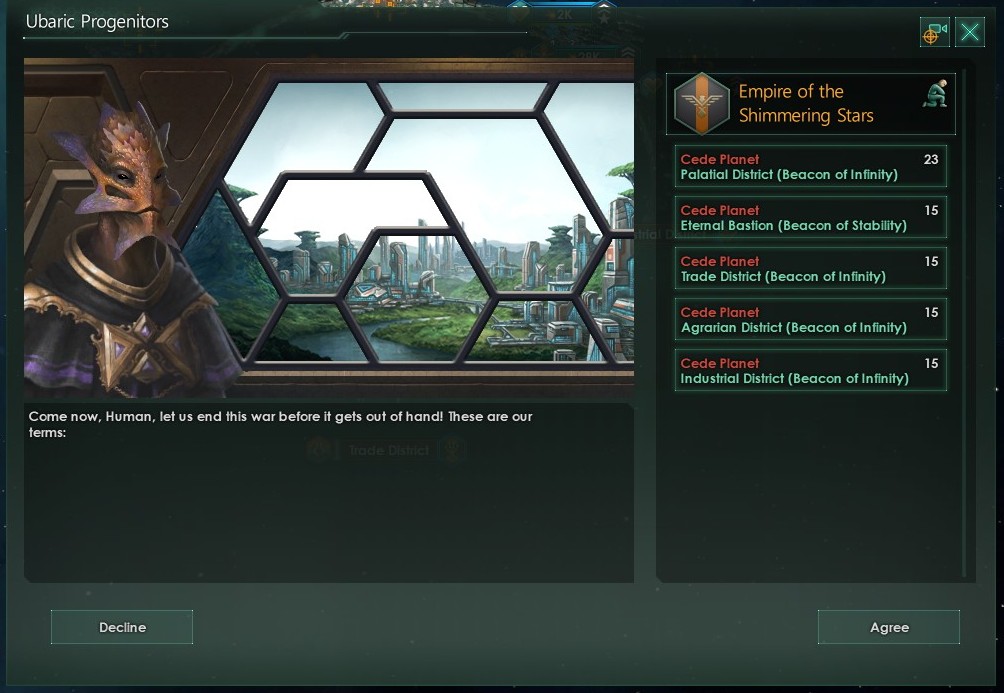 Humanity now presides over the galaxy’s dominant empire. No threats remain. The empire itself is home to many species, most co-existing happily, and its highest offices are open to leaders from all species. That, for me, is victory!
Humanity now presides over the galaxy’s dominant empire. No threats remain. The empire itself is home to many species, most co-existing happily, and its highest offices are open to leaders from all species. That, for me, is victory!
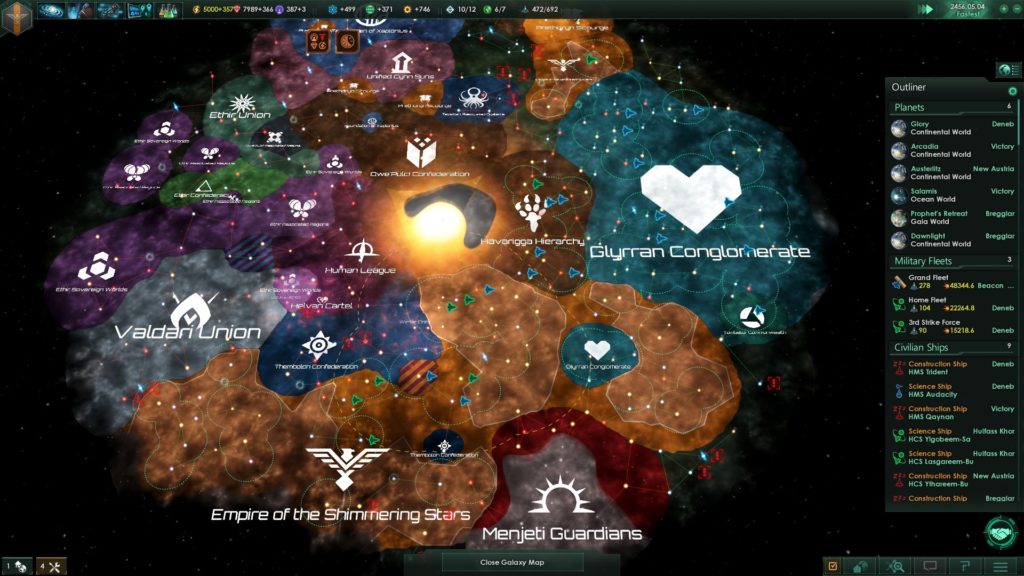 Good game, 1-2 expansions away from potential greatness. Stellaris’ appeal rested on two promises: (1) a vibrant science-fiction universe, and (2) blending Paradox’s specialty, the grand strategy game, with the established space 4X genre. It delivers on the first; I am not convinced it delivers on the second, as its limited internal politics feel more like a traditional 4X. I suspect players will enjoy it to the extent they’re looking for an interactive science fiction epic rather than a crunchy GSG. Overall, I enjoyed my 20 hours with Stellaris, and I look forward to playing again several patches down the road. (Update: the developers have posted their roadmap for the next few updates, which look great! They address many of my issues with the game.)
Good game, 1-2 expansions away from potential greatness. Stellaris’ appeal rested on two promises: (1) a vibrant science-fiction universe, and (2) blending Paradox’s specialty, the grand strategy game, with the established space 4X genre. It delivers on the first; I am not convinced it delivers on the second, as its limited internal politics feel more like a traditional 4X. I suspect players will enjoy it to the extent they’re looking for an interactive science fiction epic rather than a crunchy GSG. Overall, I enjoyed my 20 hours with Stellaris, and I look forward to playing again several patches down the road. (Update: the developers have posted their roadmap for the next few updates, which look great! They address many of my issues with the game.)
Below, I elaborate:
